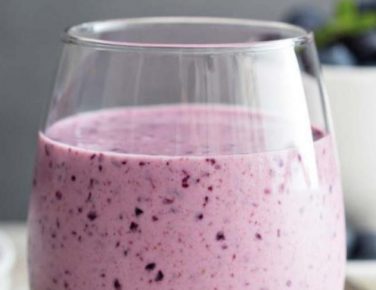
Quark Smoothie
The ideal way to incorporate some of your 5 a day. Tangy fruit flavours blend perfectly with the low fat, high protein goodness of Graham’s Quark.

The word ‘Bannock’ can refer to many slightly different non-yeasted breads, each with their regional variations from Scandinavia to northernmost Canada.
20 minutes
20 minutes
Medium
24
The word ‘Bannock’ can refer to many slightly different non-yeasted breads, each with their regional variations from Scandinavia to northernmost Canada. To me, the only bannock is the Shetland bannock. There is plenty variation amongst the twenty thousand or so people in Shetland to make my head spin enough. It’s essentially a sloppy mixture of self-raising flour and buttermilk, with a pinch of salt for flavour. The variations can arise from which flour you choose, how much buttermilk you use and if you cut it with plain old milk. But more importantly, some people bake them in the oven and some, like me, on the hob. This causes such fervent debate in Shetland that full-blown fights can break out over who’s bannock method is best. It gets so intense, that local agricultural shows have to have separate categories for oven and ‘girdle’, the slightly dodgy Shetland word for a griddle.
Weigh your flour, baking powder and salt out into a bowl and mix them together. Set this mixture aside.
Into a large bowl, place your buttermilk. Add about three quarters of your flour mixture and then mix all together. You should then add a little bit more of your dry ingredients, until you’ve got the perfect texture. You’re after something not unlike cake mix, but a little stiffer.
On the hob, place a flat griddle or a frying pan and heat this over a low-medium heat.
Make a wide pile of flour on your work surface, shaped a bit like a volcano with a crater in the middle. Scoop your sticky bannock mix out into your crater, then sprinkle plenty more flour on top. Carefully pat your bannock mix down until it’s about 2 centimetres thick.
Make a wide pile of flour on your work surface, shaped a bit like a volcano with a crater in the middle. Scoop your sticky bannock mix out into your crater, then sprinkle plenty more flour on top. Carefully pat your bannock mix down until it’s about 2 centimetres thick.
Cook them very slowly, turning half way through cooking when they look well risen. They might need as long as five minutes on each side. Whatever you do, don’t press down on them with your spatula. Turn the heat down if they’re going too dark.
As each pan-full of bannocks is done, place them in a folded tea towel to keep warm and continue cooking through. Enjoy only after properly cooled, spread with a thick layer of soft butter and filled with salted beef.
To make the softer, more cake-like ‘oven bannock’, preheat your oven to 180C/160C fan/Gas 4. Cut them into squares or circles like scones, and bake them until light golden brown, about 15-20 minutes.